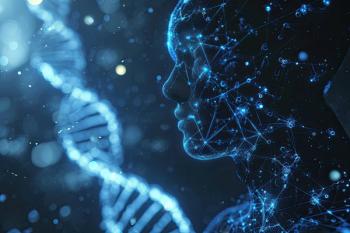
Measuring Phytosterols in Fortified Food
A balanced diet is one step closer to a healthy lifestyle. Samantha Duong from the Australian Government’s National Measurement Institute (NMI) has used gas chromatography with flame ionization detection (GC–FID) to measure phytosterols in fortified food. She recently spoke to us about this research.
A balanced diet is one step closer to a healthy lifestyle. Samantha Duong from the Australian Government’s National Measurement Institute (NMI) has used gas chromatography with flame ionization detection (GC–FID) to measure phytosterols in fortified food. She recently spoke to us about this research.
Q. Your group recently published a study presenting a novel analytical method using gas chromatography with flame ionization detection (GC–FID) to measure total phytosterols in fortified food. What led your group to begin this study?
A: This study led on from initial research efforts by the Department of Environment and Primary Industries (DEPI) into bovine feeding regime that would increase milk yield and reduce methane emissions. My research investigated the impacts of these feeding regimes on milk quality, focusing on phytosterol and cholesterol content (1). This novel analytical method developed during this study enabled trace level analysis of sterol content in milk. This research is a collaboration with the National Measurement Institute (NMI), Department of Environment and Primary Industries (DEPI), and Victoria University (VU).
Q. What were the main analytical challenges you encountered and how did you overcome them?
A: There were several analytical challenges which the analytical method developed had to satisfy: economic viability, selectivity, trace-level sensitivity, time-efficiency, robustness, and reproducibility. Prior to method development and selection, a literature review and access to instrumentation was assessed to determine if the needs of the research could be met. The potential methodology was further assessed for feasibility in a commercial laboratory environment.
Q. What is novel about your approach?
A: This method is streamlined for commercial laboratories where it is often necessary to process large numbers of samples. Compared to existing methods, it is more efficient in terms of total sample preparation time and amount of reagents used, making it more economical, less waste generated, and less labour-intensive. This method also allows for easy quantitation based on surrogate standards, making it cost-effective as phytosterol standards can be expensive and some are not readily commercially available.
The method has been satisfactorily implemented for the analysis of both animal feed and milk matrices. The bovine feeding programme study is ongoing – data is currently being collected and collated prior to any preliminary interpretations.
Q. Do you think GC with FID is an underrated technique?
A: As a result of newer technologies and the decreased cost of mass spectroscopy (MS) detectors, GC–FID may be deemed as becoming a less popular technique, particularly in applied research. There are pros and cons to all detection systems, which include their dependences, analytical requirements, and availability. In this research, the GC–FID combination was found to be fit for purpose for our analysis. If the extracts are sufficiently clean and do not contain any co-eluting interferents, then FID is a proven, economical, sensitive, and low maintenance option. However, if the extract contains interfering compounds that co-elute with the target compound, then an MS detector would allow for quantitation and identification using specific mass or ion fragments. Our method utilizes GC coupled with both FID and MS detectors for simultaneous quantitation and confirmation.
Q. The popularity of phytosterols has increased over the past decade as their health benefits have become more widely publicized. Is there such a thing as too much phytosterols in a food?
A: A balanced diet and exercise are known to be the most effective and safest approaches to maintain healthy biological functions. Even though the consumption of phytosterols has been shown to be beneficial to health, some recent short-term studies have demonstrated that high phytosterol consumption may affect the absorption of carotenoids and vitamin D (2,3,4). At this stage, further clinical studies are needed to determine the long-term effects of a high phytosterol diet.
Q. Could this method be applied to other foods high in phytosterols?
A: This method can certainly be applied to other food matrices for the determination of free and phytosterol fatty esters. This could include foods that naturally contain phytosterols, or foods that are fortified with these compounds. We have successfully applied this method to several meat, dairy, and oil samples at the NMI laboratory.
Q. What is your group working on next?
A: Our research group is currently in the process of extending this developed method with optimized acid hydrolysis and a solid-phase extraction (SPE) cleanup step. This will allow for total phytosterol determination, which includes associated glycoside conjugates, that may give us a better understanding of how feeds influence milk quality.
References
1. S. Duong et al., Food Chemistry211, 570–576 (2016).
2. A. Goncalves et al., Molecular Nutrition & Food Research55(S2), S303–S311 (2011).
3. H. Gylling et al., Clinical nutrition (Edinburgh, Scotland) 29(1), 112–8 (2010).
4. P.M. Clifton et al., Journal of lipid research45(8), 1493–9 (2004).
Samantha Duong completed her B.Sc. (Honours) at VU and joined the Australian Government’s NMI in 2007 as part of their student programme. She later accepted an ongoing position with the NMI laboratories as an analytical chemist. In this role, Samantha is responsible for analyses in food metrology ranging from pesticides, water and fat soluble vitamins, sterols, fatty acid profiles, and migration residue testing in plastic packaging. Samantha also undertakes method development and validation with specializations in chromatography, including capillary electrophoresis and gas and liquid chromatography coupled with various detection systems. Samantha is currently completing her Ph.D studies investigating phytosterols in bovine milk, as part of a collaborative research programme involving the NMI, DEPI, and VU.
Newsletter
Join the global community of analytical scientists who trust LCGC for insights on the latest techniques, trends, and expert solutions in chromatography.




